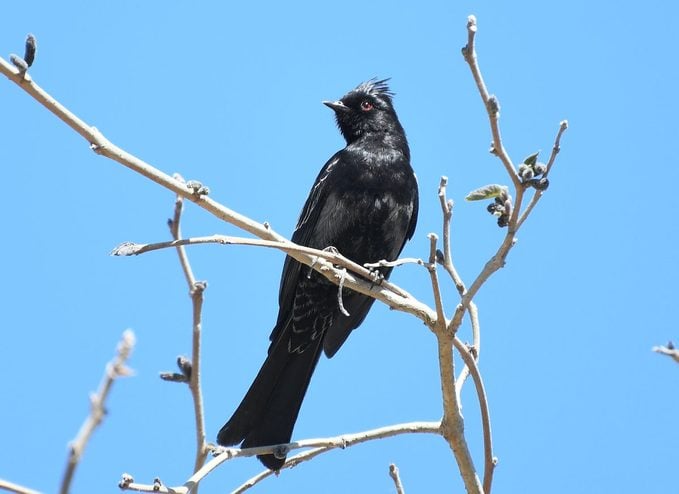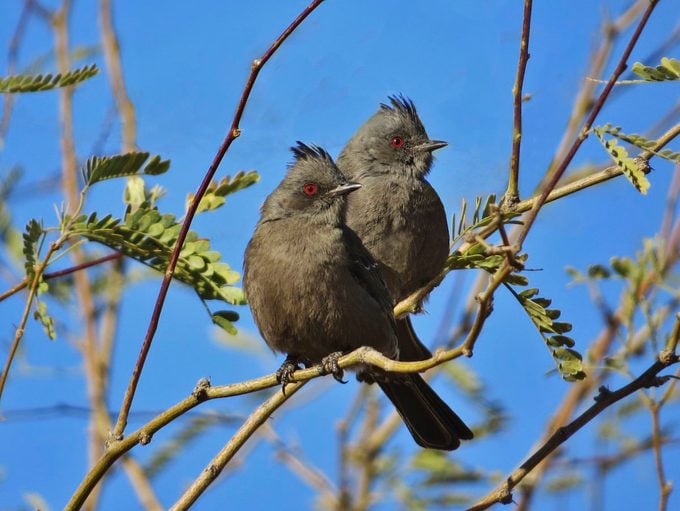Meet the glossy black crested phainopepla bird. Find out what this bird eats and learn where you can spot this silky flycatcher.
How to Identify a Phainopepla Bird
On This Page
What Does a Phainopepla Look Like?

“What is this bird?” asks Sarah West of Ventura, California.
Birding experts Kenn and Kimberly Kaufman say, “That’s a special visitor! The bird is called a phainopepla. It’s the only member of the silky-flycatcher family that’s found regularly in the United States.”
Interestingly, this bird is not related to other North American flycatchers.
At a glance, phainopeplas can almost look like a cardinal that’s been painted black. Check out more birds that look like cardinals.

“You can recognize phainopeplas by their slim shape, spiky crest and red eyes,” Kenn and Kimberly say. Males are glossy black and have white patches on their wings that can be seen when in flight. Female phainopeplas have a similar look to males, but their color is pale gray.
If you’re wondering about the unique name for these birds, there’s a good explanation for it. According to Kenn and Kimberly, “Their name comes from Greek words that mean ‘shining cloak,’ referring to the male’s glossy plumage.”
Phainopepla Range and Habitat

Kenn and Kimberly say, “Widespread in the Southwest, from California to western Texas and south into Mexico, phainopeplas wander unpredictably, sometimes showing up in large flocks.” You can also look for them in both the Sonoran and Mojave Deserts.
Psst—meet the desert birds of the Southwest.
Diet: What Does a Phainopepla Eat?
“They feed mainly on small fruits, especially from mistletoe,” Kenn and Kimberly say. These birds may also stop by to feast on elderberries or sumac or juniper trees. Within their range, you can also attract them by providing a backyard that is bug-friendly.
Call and Sounds
Bird sounds courtesy of the Cornell Lab of Ornithology
Listen for a phainopepla’s wurp? call, which is soft but rises in tone. Males and females behave similarly to waxwings during the nest building stage, sometimes clicking their bills.
Next, meet the energetic verdin bird of the Southwest.
Sources
About the Experts
Kenn and Kimberly Kaufman are the official bird experts for Birds & Blooms. They are the creators of the Kaufman Field Guide series and they lead birding trips all over the world.





















